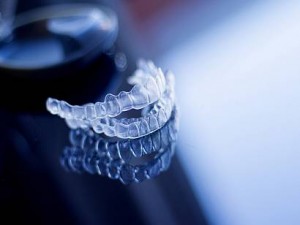It shouldn’t be surprising that we see such cost-saving technologies in orthodontics
By David R. Henderson
I have an economist friend who nags me (appropriately) for not sufficiently discussing supply-side solutions to the high cost of medical care in the United States. Here’s one step in righting the balance.
Kayla Stetzel, a Spring 2018 intern at Reason, writes in “Start-Ups Make Cheap Alternative to Braces, Dental Trade Groups Cry for Regulation,” May 3:
Braces are a burden. People have to miss work, arrange for child care, and travel to the orthodontist office over the span of a two to three years. Teens have to cut classes and ditch those after-school events to make room for appointments. Then there’s the price. Traditional Braces cost on average $5,000. Invisalign—a clear, plastic alternative to braces that is available only through licensed dental care providers—runs around $8,000.
SmileDirectClub’s aligners—clear plastic mouth guards designed to straighten teeth—cost $1,850. CandidCo., another dental startup, charges $1,900. The fitting and monitoring uses a telemedicine model. Customers who can’t or don’t want to get their teeth scanned in-store can have impression kits delivered straight to their door. “Aligners” based on those molds are then delivered to customers at home. It’s part of an emerging trend in dental care known as teledentistry, which uses alternative platforms like mobile apps, video chats, and dashboards to give people remote access to dental care.
The stark difference in cost and convenience matters. Many insurance companies do not cover orthodontic work, which is cosmetic for 98 percent of consumers. Private plans typically have a small cap for orthodontic coverage, leaving most people on their own to foot the bill. The AAO states that roughly 80 percent of Americans could benefit from orthodontics, yet less than four million people receive orthodontic treatment each year. According to the ADA, high costs are the chief reason why one-third of Americans don’t receive adequate dental care.
Notice the price difference between this new technology for orthodontics and the old. You can see why orthodontists are arguing against it: some of them would lose their jobs and many of them would lose income from this new Schumpeterian competition.
Incentives Matter
Also, as the third paragraph above implies, it shouldn’t be surprising that we see such cost-saving technologies in orthodontics. Just as with Lasik eye surgery or elective plastic surgery, when customers are paying a huge percent—in many cases, 100 percent—of the bill, they are quite sensitive to costs.
By the way, this shows that my emphasis on reforming the demand side of health care—one of the main ways being by having the customer face more of the incremental cost—might be justified. If customers face more of the cost, they will be more open to, and many will advocate, reforms on the supply side.







